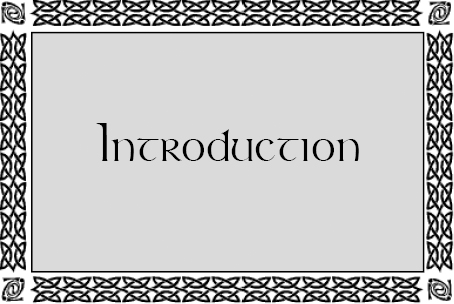
It was not only local storytellers—those men and women who sat by the hearthside of a Winter's night and entertained their neighbors with stories of great deeds in times long past and tales of the imminent supernatural—who looked towards the ancient corpus of belief and tradition. The successors of the oral transmitters, writers and artists, also drew on the lore of former times for their stories and pictures. Some of the writers simply recorded the tales that they heard, but others used the themes and suggestions that they'd heard in the Celtic countryside as a basis around which to build tales of their own. In a sense, they were following a tradition that dated all the way back to the Celtic Bards who changed and embellished some of the ordinary events that they recited into something marvelous and strange.
Many of these writers had either Celtic backgrounds or were interested in Celtic matters. Relatively recent writers such as American H.P. Lovecraft, with his lurking terrors in the hills of rural Rhode Island, or British writers such as Arthur Machen, with his stories of strange little people hiding in the hollows of rural Wales, owe much to the stories and storytellers of earlier times. They look toward talespinners such as Joseph Sheridan Le Fanu, who wrote about wizard Earls emerging out of lakes or young girls marrying mouldering corpses (a common theme in some of the more gruesome Irish and Scottish legends); or to the collectors of rural folklore such as Jeremiah Curtin, Elias Owen, or Lady Gregory, with their fearful stories of small children being carried away by shadowy creatures that dwelt amongst (or sometimes under) the gloomy hills. Such stories have provided a basis for much of the fantastic and spine-tingling literature that we have enjoyed over the years.
Even the greatest bogeyman of them all, the dark and cape-clad Count Dracula, may well have his origins in Celtic folktale. Although he is portrayed as a Transylvanian (East European) nobleman, it is possible to argue that the Count may have had his origins in the mists of Celtic folklore. Remember that Dracula's author, Bram Stoker, was Irish and had been brought up in Dublin, where his family had been attended by serving-maids from County Kerry. Undoubtedly, he would have heard old folktales of the blood-drinking fairies dwelling in the Magillycuddy Reeks Mountains. Later, as a man visiting his old friends Sir William and Lady Wilde, both collectors of folktales, he could have heard old stories of cannibalistic Irish chieftains from North Derry and all of these elements may well have influenced his portrayal of the vampiric Transylvanian nobleman. And similar tales may have also influenced his predecessor, Le Fanu, to pen one of the earliest vampire tales: the celebrated “Carmilla.” Thus novels and even modern-day film may very well have been influenced by the tales told around the Celtic fires of long ago.
Other writers, too, have drawn on Celtic roots for their tales. Stories of unsettled spirits and ancient charms and shehoguey places have been featured in many tales right up to today. Even television series such as the X-Files and more recently Buffy the Vampire Slayer have, from time to time, drawn on Celtic themes and have reawakened interest in these ancient tales. And each year, novels and anthologies appear that reflect, either consciously or unconsciously, many of the motifs and perspectives of an earlier Celtic folklore.
The folktale has come a long way, from the whispered stories in the dark of the night as ancient warriors bedded down for the night; through the yarns and mysteries told and hinted at by local storytellers around the rural hearths as evening drew in; to the books, films, and television series of our fast, “sophisticated,” modern world. Perhaps, in some ways at least, the ancient tales have adapted and have become, almost imperceptibly, a strand of our own culture, serving to show just what a clever animal the folktale is. It will be with us for years to come, for it is a fundamental part of our heritage and culture, and more: it is a fundamental part of us, whether we be Celt or not.